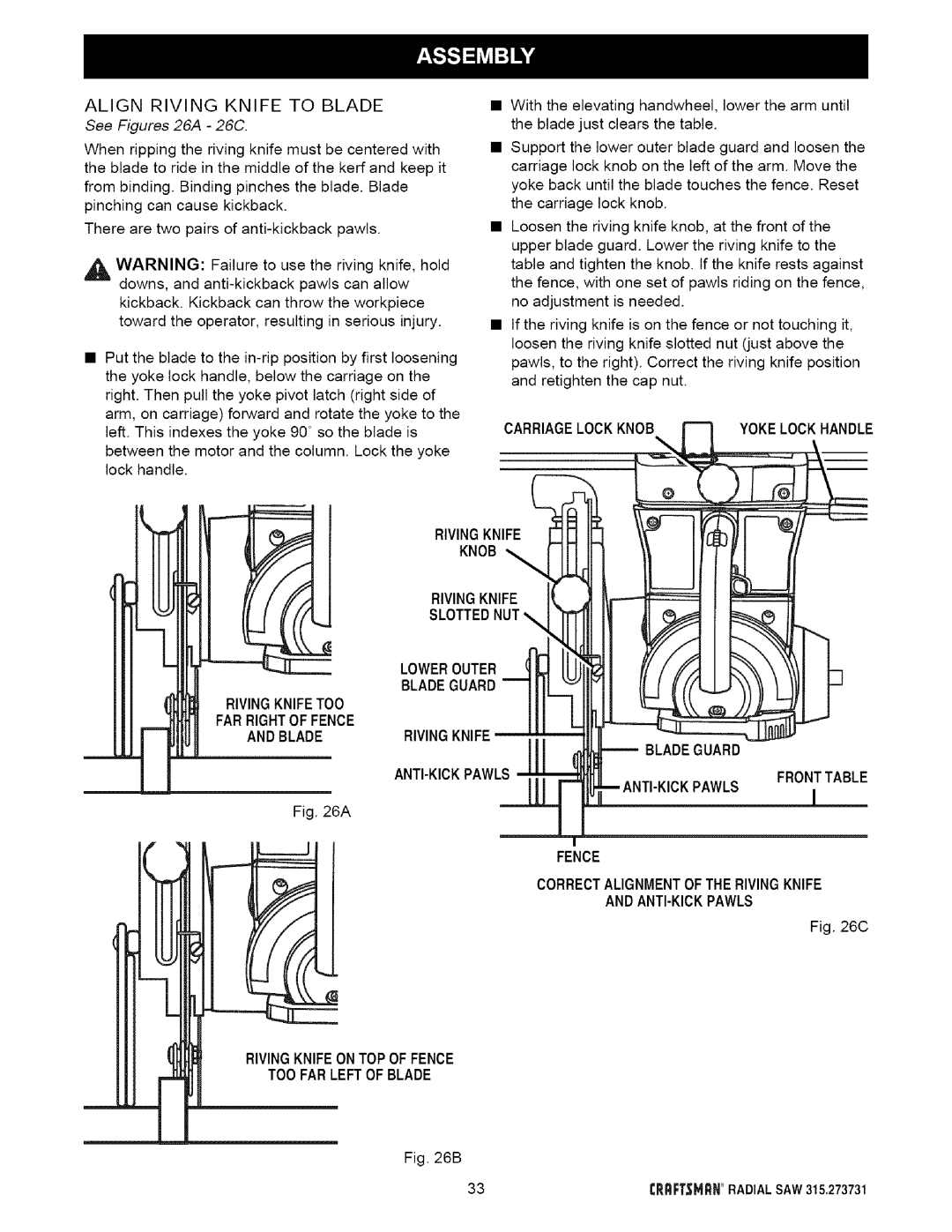
ALIGN RIVING KNIFE TO BLADE
See Figures 26A - 26C.
When ripping the riving knife must be centered with the blade to ride in the middle of the kerf and keep it from binding. Binding pinches the blade. Blade pinching can cause kickback.
There are two pairs of
,_!1 WARNING: Failure to use the riving knife, hold downs, and
kickback. Kickback can throw the workpiece toward the operator, resulting in serious injury.
•Put the blade to the
•With the elevating handwheel, lower the arm until the blade just clears the table.
•Support the lower outer blade guard and loosen the carriage lock knob on the left of the arm. Move the yoke back until the blade touches the fence. Reset the carriage lock knob.
•Loosen the riving knife knob, at the front of the upper blade guard. Lower the riving knife to the table and tighten the knob. tf the knife rests against the fence, with one set of pawls riding on the fence, no adjustment is needed.
•If the riving knife is on the fence or not touching it, loosen the riving knife slotted nut (just above the pawls, to the right). Correct the riving knife position and retighten the cap nut.
CARRIAGELOCK KNOBYOKELOCKHANDLE
RIVINGKNIFE
KNOB
| RIVINGKNIFE |
|
| SLOTTEDNUT |
|
| LOWEROUTER |
|
| BLADEGUARD |
|
RIVINGKNIFETOO |
|
|
FARRIGHTOF FENCE | RIVINGKNIFE |
|
AND BLADE | BLADEGUARD | |
|
| |
| FRONTTABLE | |
|
| .3KPAWLS |
Fig. 26A |
|
|
|
| FENCE |
|
| CORRECTALIGNMENTOFTHERIVINGKNIFE |
|
| |
|
| Fig. 26C |
RIVINGKNIFEONTOP OF FENCE
TOO FARLEFTOF BLADE
Fig. 26B
33 | rRRFTSMRN°RADIALSAW 315.273731 |
